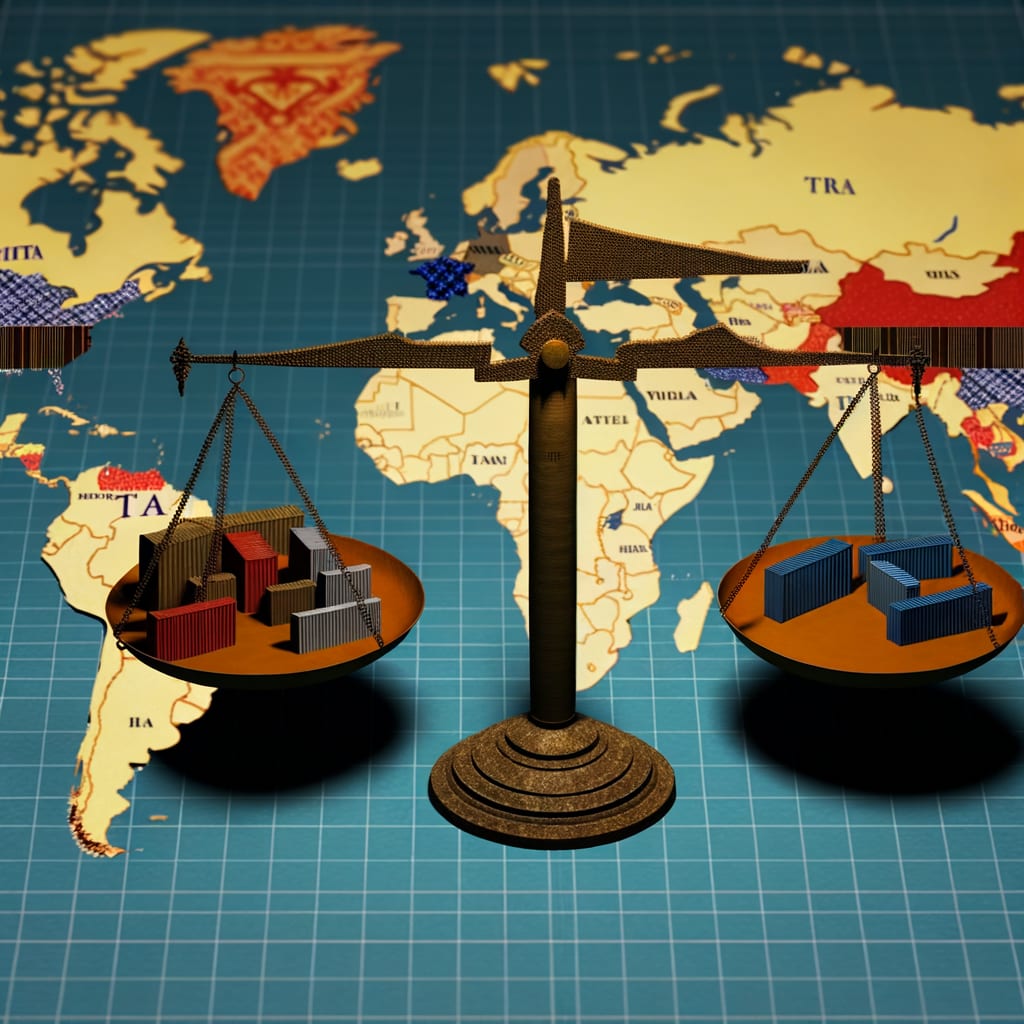Trump's Sweeping Tariffs Take Effect, Impacting Dozens of Countries
US President Donald Trump's broad-ranging tariffs, affecting an estimated 80 countries, including the 27 members of the European Union, came into effect this Friday, August 1st. While several nations managed to secure last-minute agreements with the White House, key economies such as Brazil and India have been penalized with significant increases in rates.
Background and Context
The tariffs are part of a global trade strategy set by President Trump, whose administration had warned dozens of nations in early July that unless bilateral trade agreements were reached by August 1, punitive tariffs would be unilaterally imposed. The sweeping measure adjusts tariffs for dozens of countries, with some witnessing increases, while others secured last-minute deals.
The tariffs reflect if countries have agreed to, or are on the verge of agreeing to, meaningful trade and security commitments,
according to a White House statement. Countries that failed to engage in talks or offered terms that do not sufficiently address imbalances
faced heightened tariffs.
Key Developments
A handful of countries, including the EU, managed to reach agreements ahead of the deadline. However, several countries, including Brazil, India, and Canada, were hit with substantial rate hikes. For instance, India now faces a 25% tariff on its U.S.-bound exports due to its continued trade with Russia and its membership in BRICS. Brazil, despite being the current chair of BRICS and having a sizable trade deficit vis-à-vis the US, has been slapped with a staggering 50% tariff.
On the other hand, Australia managed to dodge any tariff increase, with Australian goods imported into the US continuing to attract the baseline 10% tariff. Indonesia also had its tariff cut to 19% from the initial 32% following a US$3.2 billion plan by its flag carrier to buy 50 Boeing aircraft.
Reactions and Implications
The new tariffs have already raised costs, driven up prices, hit key industries, and brought in $124bn in revenue for the US ahead of the August 1 deadline. Some fear these tariffs will impact consumers. The Consumer Brands Association, which represents companies like Coca-Cola, PepsiCo, Nestlé, and Kellog, warned the Trump administration that the tariff on Brazil will have implications for American consumers.
Moreover, the tariffs' impact extends to low-value commercial shipments. Under a new executive order, packages valued at or under $800 sent to the US outside of the international postal network now face all applicable duties
from August 29.
Current Status
Despite the uproar following the first wave of tariff threats earlier this year, the latest round of tariffs has been met with a surprising degree of composure from the international community. How this global trade strategy will impact the US's long-term economic and diplomatic relationships remains to be seen.

